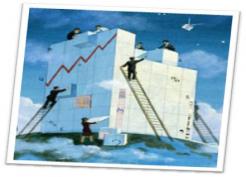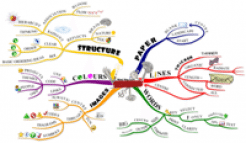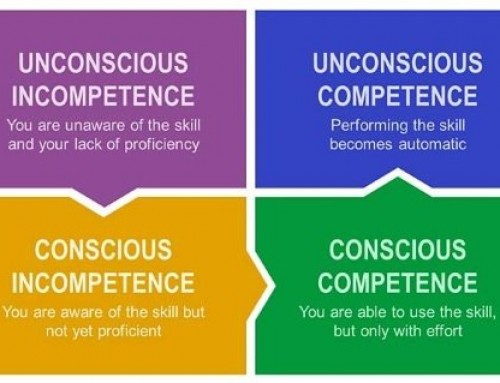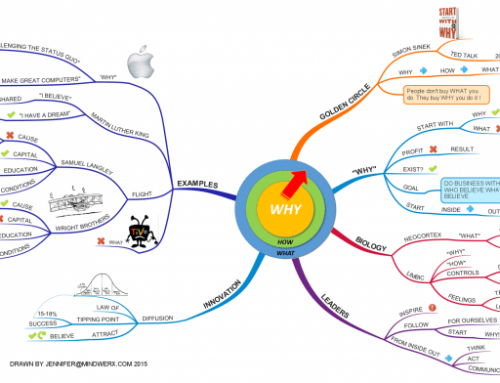 Facilitating creative collaboration is one of the most important management roles in leading a creative environment. In particular empowering a team with critical and creative thinkingfacilitates innovation effort that draws out new exciting ideas from the team.
Facilitating creative collaboration is one of the most important management roles in leading a creative environment. In particular empowering a team with critical and creative thinkingfacilitates innovation effort that draws out new exciting ideas from the team.
Today’s leader needs to be a facilitator that draws on his/her experience, and uses Critical and Creative Thinking skills, and design processes and tools to promote team innovation. Generally we see those responsible for others having three inter-mingling roles:
- Leader: providing inspiration and direction setting
- Manager: ensuring resources and wherewithal are available to achieve the objectives
- Facilitator: guiding people through the process to optimise skills, experience and collaboration
Each of these roles require clarify of thinking, and when focused on creative idea generation there are a range of critical thinking tools that can be used to increase creativity. In this Blog I want to focus on techniques you might use as a Leader of a team…
As a leader, the aim is to provide a clear direction that inspires the team to move forward positively. A great way to do this is with various Visualisation techniques. For day to day issues simply providing a briefing on what needs to be achieved may suffice.
We see this with Call Centre teams who are given start of shift briefings on the product/service being promoted and the type of potential customer they will be speaking to. In Sales we see Sales Managers stepping the Sales Team through the customer meeting, presenting product information, handling objections, and signing the sale.
For more strategic thinking, Creative Imaging techniques that have the team work together to ‘draw’ a picture of the desired future are helpful. By working as a team discussing the organisation and its environment several year out, the team is able to share different perspectives, build on current challenges and strengths and represent that visually. I have even done this with negotiating teams working over a couple if days to come to a final agreement on how their partnership might develop.
For Leaders seeking to articulate a comprehensive Vision to a team, or even an entire organisation, I recommend starting with a personal Mind Map. Use your Mind Map to capture all your thinking, let it self-organise itself onto the paper (I always start with a hand-drawn Mind Map burst to rapidly capture my thinking). Keep your mind on what you want to create and let your creativity flourish – don’t assess or filter your thinking at this stage.
 Once you have a rough Mind Map of your thinking, let it sit for a while and then move to the second stage Mind Map, now possibly using iMindMap or MindGenius Mind Mapping Software and refine your thinking. Examine the starting Mind Map and determine the key branches for your new Mind Map. Then let it build – transfer relevant information over, change what needs changing, add new ideas and insights, and drop unnecessary items. At this stage stay in Mind Map mode, don’t worry yet about details.
Once you have a rough Mind Map of your thinking, let it sit for a while and then move to the second stage Mind Map, now possibly using iMindMap or MindGenius Mind Mapping Software and refine your thinking. Examine the starting Mind Map and determine the key branches for your new Mind Map. Then let it build – transfer relevant information over, change what needs changing, add new ideas and insights, and drop unnecessary items. At this stage stay in Mind Map mode, don’t worry yet about details.
Once your new Mind Map is complete, go back and start to add real details. If you are using iMindMap or MindGenius add this in the Notes area. Add any images that create a more brilliant picture of your goals, and include any links, notations, etc that will help later.
Once this is all done bring your team together and share your Mind Map with them. Take them through the building stages, show them how the visualisation developed and invite them to add more to it. This will create a powerful image of what needs to be achieved in their minds, and they will feel part of the vision you have painted.
Of course you can involve your team earlier than this if you wish.
There are many Visualisation tools you can use to create an image that inspires your team, and there is no question that the team that can ‘see and believe’ an inspiring Vision will be far more successful. Of course, you need much more than just visualisation to achieve your goals, and that brings into play the second part of a technique called Imagineering.
Imagineering is the bringing together of two words – Imagine and Engineering. The aim is to first Imagine what is to be achieved – through Visualisation processes, then Engineer it into reality with deliberate thinking and action. And this of course is where many fail. And in many way this is now the role of the Manager – the person who mobilises resources and human wherewithal to accomplish the goals. And that will be the focus for my next Blog…
Empowering Team Creativity is a core program in the Mindwerx suite of programs and builds on the fundamentals of Critical and Creative Thinking. In our program we look at Imagineering as a key leadership tool, and go on to look at collaborative and parallel thinking tools that make teams significantly more efficient, effective and creative in their thinking.







Leave A Comment
You must be logged in to post a comment.